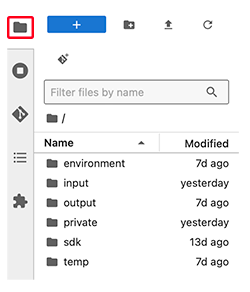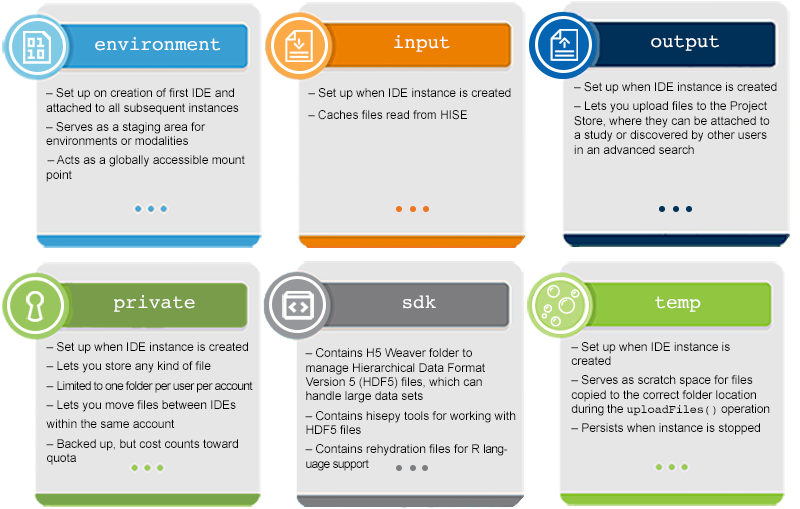Explore NextGen IDE Folders
 | Abbreviations Key |
| HISE | Human Immune System Explorer |
| IDE | integrated development environment |
| SDK | software development kit |
| UI | user interface |
At a Glance
This document explains the NextGen IDE workflow, including the function and persistence of each folder in your IDE. When you're ready to get started, see Create Your First NextGen IDE (Tutorial). To learn how to start, stop, restart, delete, or clone an IDE instance, see Manage NextGen IDE Instances (Tutorial).
IDE Basics
An IDE is a comprehensive software suite that consolidates various scientific tools and libraries into a unified platform. Working in a HISE NextGen IDE streamlines the data analysis process by providing a centralized space in which to work and visualize your data. You can choose from preinstalled data modalities curated by experienced software developers with the help of leading scientists in flow cytometry, Olink protein analysis, scRNA-seq, single-cell genomics, and other specialized areas. For details about data modalities, see Manage NextGen IDE Packages.
Folder Hierarchy
The folders in a HISE NextGen IDE (see the screenshot of the file tree) are described below and summarized in the image that follows. The table below summarizes folder persistence.
 Environment
Environment
The /environment folder contains the Conda environment for the modality you select, as well as all necessary dependencies. If you use conda install <package name>, the package is added to the /environment folder.
Input
The read-only /input folder is used to store incoming data and system configuration files needed for proper execution. A caching mechanism allows temporary storage of files to speed up loading and improve performance when frequently accessed data is retrieved.
Output
You're unlikely to interact directly with the /output folder. It stores data to be uploaded back to HISE (for example, during an uploadFiles() call).
| Folder | Persists? (Y/N) |
/environment | Y |
/input | N |
/output | N |
/private | Y |
/sdk | N |
/temp | Y |
Private
When it doesn’t make sense to write your outputs or intermediates into HISE, the /private folder stores your data. This folder can also be used to move content between IDEs within the same account. Files written into the /private folder folder are placed into cheap, durable cloud storage that persists even after the IDE is deleted.
SDK
The SDK is a collection of tools for expanding the HISE platform by adding visualizations, uploading new findings, or performing other specialized tasks. The SDK also supplies methods that let you interact with HISE programmatically in either R or Python. These methods are available once your VM is created, so there’s no need to install additional tools. For details, see Use HISE SDK Methods. The tools stored in the /sdk folder do not persist when the instance is stopped.
Temp
The /temp folder is used to cache data in active use, process temporary files, and store intermediate computational results. This data persists when the instance stops.

 Related Resources
Related Resources
Create Your First NextGen IDE Instance (Tutorial)
NextGen IDEs Q&A and Troubleshooting Guide
